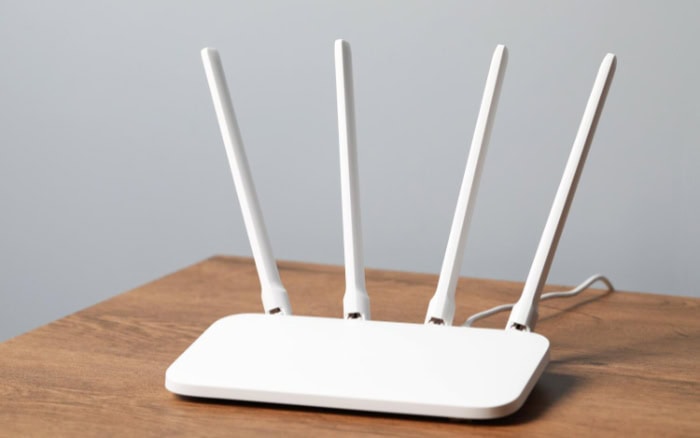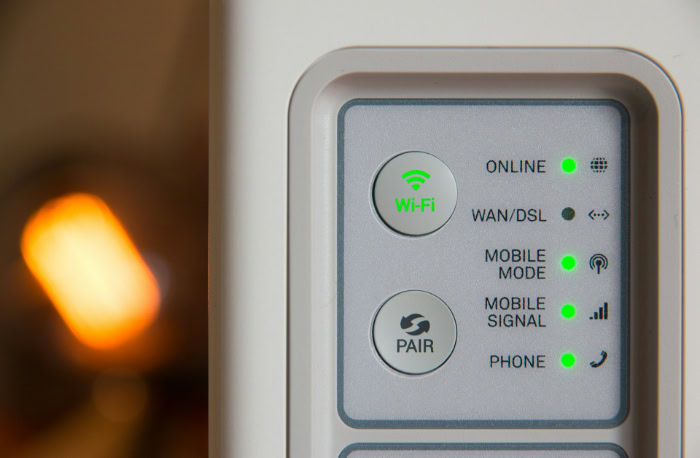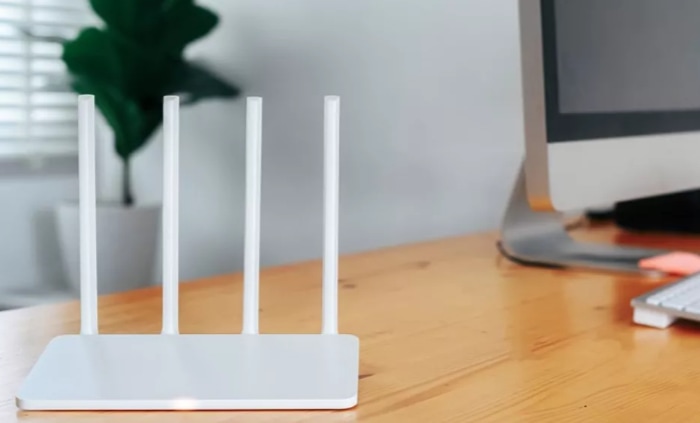How Does a Router Work? The Complete Breakdown

Every email sent, video streamed, and website visited relies on a small box that directs traffic across the global internet. That device is a router, a specialized computer that connects your local network to the outside world.
It acts as the critical bridge between your personal devices and the vast web, forwarding data packets with precision. This guide examines its internal components and traces a packet’s path from origin to destination. It covers essential functions like addressing, security protections, and wireless performance factors.
What a Router Does
A router is a fundamental component of any modern network, responsible for directing traffic and connecting disparate networks. While often confused with other networking hardware, its role is unique and critical for internet access.
The device manages communication between your local devices and the broader web, functioning as a digital traffic controller. It determines the most efficient path for data to travel and ensures information gets to its intended destination.
Router vs. Modem, Switch, and Access Point
Though home internet setups often use a single piece of hardware, that box usually combines several devices with distinct jobs. A router’s primary function is to forward data packets between different networks, making logical decisions based on IP addresses.
It serves as the gateway that connects your private local network to the public internet.
In contrast, a modem acts as an interpreter for your Internet Service Provider (ISP). It converts the signals from your ISP into a format your router can use.
A switch operates within a single local network, connecting wired devices like computers and printers so they can communicate directly with each other. Finally, an access point provides wireless connectivity, allowing Wi-Fi enabled devices to join the network.
Many consumer-grade routers integrate a switch and an access point into one unit.
Connecting Local and Wide Area Networks
Routers operate at the boundary of a Local Area Network (LAN) and a Wide Area Network (WAN). The LAN is your private network, encompassing all the devices in your home or office connected via Ethernet cables or Wi-Fi.
The WAN is a geographically vast network, which for most users is simply the internet.
A router facilitates communication between these two distinct environments. Your devices connect to its LAN ports or its wireless signal. A separate WAN port connects to the modem, establishing the link to the internet.
The router enforces the boundary between them, managing all data that flows in and out of your local network.
The Core Mission: Forwarding and Segmenting
A router’s fundamental mission is twofold: intelligently forwarding traffic and segmenting network domains. When a data packet arrives at the router, the device examines the destination IP address in the packet’s header.
It then consults an internal database, called a routing table, to determine the best path for that packet to reach its final destination. This process involves selecting the most efficient “next hop” on the path toward the target network.
Simultaneously, a router segments broadcast domains. This separation is crucial for efficiency and security.
It ensures that traffic intended only for local devices, like a computer searching for a network printer, remains confined to the LAN. By preventing local chatter from spilling onto the internet, the router reduces congestion and keeps network communication orderly.
Inside the Router

To understand how a router directs traffic, it helps to look inside the device itself. A router is a specialized computer designed for a single purpose: moving data packets efficiently between networks.
Its architecture is divided into logical decision-making functions and high-speed hardware components that work together. This internal structure allows a router to analyze, process, and forward millions of packets per second.
Control and Forwarding Planes
A router’s operations are conceptually split into two distinct parts: the control plane and the forwarding plane. The control plane can be thought of as the router’s brain. It is responsible for building a map of the network.
It runs routing protocols to communicate with other routers, learns about available paths, and compiles this information into a routing table. The control plane operates at a relatively slow pace because its job is to establish and maintain the logic that governs traffic flow, not to handle the traffic itself.
The forwarding plane, on the other hand, is the muscle. It takes the map created by the control plane and uses it to move packets at incredible speeds.
When a packet arrives, the forwarding plane quickly looks up the destination in a streamlined table (called a Forwarding Information Base, or FIB) and sends the packet out the correct port. This separation allows the forwarding plane to be highly optimized in hardware, ensuring that packet movement is not slowed down by the router’s more complex thought processes.
Internal Components
Like a general-purpose computer, a router contains several core hardware components that enable its functions. These parts are specifically chosen and configured for networking tasks.
- CPU and Memory: The Central Processing Unit (CPU) executes the operating system instructions and runs the control plane processes. The router also uses several types of memory. RAM holds the active configuration, routing tables, and temporary packet buffers. Flash memory acts like a solid-state drive, storing the router’s operating system. NVRAM stores the startup configuration file, ensuring settings are not lost during a reboot.
- Ports: The input and output ports are the physical interfaces where data enters and leaves the device. These include Ethernet ports for the LAN and a WAN port for the internet connection.
- Switching Fabric: This is a crucial internal component that creates a high-speed electrical pathway between the input and output ports. The switching fabric is what allows a packet to be moved from its entry point to its exit point with minimal delay, directly contributing to the performance of the forwarding plane.
The Path of a Packet
When a data packet arrives at a router, it undergoes a rapid, step-by-step process before being sent on its way.
- A packet arrives on an input interface and is temporarily stored in memory.
- The router examines the packet’s header to identify the destination IP address.
- It consults its forwarding table to find the entry that best matches the destination address. This lookup reveals which exit interface to use and the IP address of the next router in the path.
- If the packet is moving from a private LAN to the public internet, the router performs Network Address Translation (NAT). It replaces the original device’s private source IP address with its own public IP address.
- The router then forwards the packet to the appropriate exit interface, where it is transmitted toward its next hop.
Addressing, Translation, and Built-in Protections
Beyond directing traffic, routers provide essential services that make networks functional and secure. They manage how devices get IP addresses, enable entire private networks to communicate with the internet using a single public address, and act as a first line of defense against external threats.
NAT and Port Address Translation
Network Address Translation (NAT) is a function that allows multiple devices on a private network to share a single public IP address provided by an ISP. Because public IPv4 addresses are limited, NAT is essential for conserving them.
When a device on your local network sends a request to the internet, the router replaces the device’s private source IP address with its own public IP address before forwarding the packet.
To manage return traffic for multiple devices, the router uses a specific form of NAT called Port Address Translation (PAT). The router assigns a unique port number to each outgoing connection and keeps a record of it in a translation table.
When a response comes back from the internet to that specific port, the router consults its table, restores the original private IP address, and forwards the packet to the correct device on the local network. A secondary benefit of this process is that it hides the internal structure of the private network from the outside world.
Automated Addressing with DHCP
The Dynamic Host Configuration Protocol (DHCP) is a service running on the router that automates the assignment of IP addresses to devices on the local network. Without DHCP, each device would require manual configuration to communicate.
When a computer, smartphone, or other device connects to the network, it sends out a broadcast request for an IP address.
The router’s DHCP server responds to this request by offering an available private IP address from a predefined pool. Along with the IP address, it also provides other crucial information, including the subnet mask, the IP address of the default gateway (which is the router itself), and the IP addresses of DNS servers.
This automated process allows devices to connect and get online seamlessly.
Firewalls and Access Control Lists
Routers typically include a built-in firewall that serves as a barrier between your secure local network and the untrusted internet. Most consumer routers use stateful packet inspection (SPI), a firewall technology that monitors the state of active connections.
It tracks outgoing requests and automatically allows the corresponding return traffic to enter the network. However, it blocks unsolicited inbound traffic from unknown sources, which helps prevent many common types of cyberattacks.
For more granular control, many routers support Access Control Lists (ACLs). An ACL is a set of rules that explicitly permit or deny traffic based on criteria like source and destination IP addresses, port numbers, and the protocol being used.
By applying these rules to traffic entering or leaving the network, administrators can enforce security policies and limit the network’s overall exposure to potential threats.
Wireless Connectivity and Performance

For most people, a router’s most visible job is providing Wi-Fi, the wireless connection that links countless devices to the network. The performance of this wireless network depends on more than just advertised speeds.
Factors like radio frequencies, physical placement, and traffic management settings all play a significant role in determining the quality and reliability of your connection.
The Router’s Wireless Functionality
Most contemporary routers are combination devices that include a built-in wireless access point. They broadcast signals on specific radio frequencies to create a Wireless Local Area Network (WLAN).
Many are dual-band, operating on both the 2.4 GHz and 5 GHz frequency bands simultaneously. Some are tri-band, offering an additional 5 GHz or a 6 GHz band. The 2.4 GHz band provides greater range but is slower and more susceptible to interference, while the 5 GHz and 6 GHz bands offer much faster speeds over a shorter distance with less congestion.
Wireless standards, identified by names like Wi-Fi 5 (802.11ac), Wi-Fi 6 (802.11ax), and Wi-Fi 7 (802.11be), also define a router’s capabilities. Each new standard brings improvements in speed, efficiency, and the ability to handle more connected devices at once.
For best performance, both the router and the client devices must support the same standard.
Optimizing Coverage and Interference
The physical location of a router has a major impact on wireless performance. For optimal coverage, the device should be placed in a central, elevated location away from thick walls, large metal objects, and other electronics.
Materials like concrete, brick, and metal appliances can weaken or block Wi-Fi signals, creating “dead zones” where the connection is poor or non-existent.
Interference from other devices can also degrade performance. Wi-Fi networks from neighbors, Bluetooth devices, microwave ovens, and some cordless phones all compete for radio airtime, especially on the crowded 2.4 GHz band.
Routers attempt to mitigate this by automatically selecting the least congested wireless channel, but in dense environments, manual channel selection can sometimes yield better results.
Quality of Service and Prioritization
Quality of Service (QoS) is a router feature that manages network traffic to improve performance for specific applications. It allows you to prioritize packets from activities that are sensitive to delay, such as video calls, online gaming, and media streaming.
When the network is busy, QoS ensures that these prioritized packets are handled before less urgent data, like a large file download or a software update.
Without QoS, a router treats all traffic equally on a first-come, first-served basis. During periods of high network activity, this can cause buffering during a movie or lag in a game.
By enabling and configuring QoS, you can instruct your router to allocate bandwidth more intelligently, ensuring a smoother experience for the applications that matter most.
Setup, Security, and Troubleshooting
Properly configuring a router is the first step toward a stable and secure network. A systematic approach to setup, combined with proactive security measures, can prevent many common issues.
When problems do arise, a logical troubleshooting process helps isolate the cause quickly, whether the fault lies with a single device, the router itself, or the external internet connection.
Initial Router Setup
The first step in setting up a new router is establishing the physical connections. Plug an Ethernet cable from your modem into the router’s designated WAN or “Internet” port.
Then, connect a computer to one of the router’s LAN ports. Once powered on, open a web browser and navigate to the router’s default IP address, which is usually printed on the device itself or in its manual.
From this administrative interface, you will configure your wireless network. Choose a unique name, or SSID, for your Wi-Fi network.
For security, select the WPA3 encryption standard if available; otherwise, use WPA2. Set a strong, unique password for your Wi-Fi. After saving these settings, verify that you have internet access on the wired computer.
Then, connect a wireless device to the new Wi-Fi network to confirm that both local and internet connectivity are working correctly.
Essential Security Hardening
Out of the box, most routers have default settings that are insecure and well-known. Hardening your router’s security is a critical step. The most important action is to change the default administrator username and password.
Leaving the default credentials makes your router’s settings accessible to anyone on your network and potentially from the internet.
Next, ensure the router’s built-in firewall is enabled to block unwanted inbound traffic. You should also regularly check for and install firmware updates.
Manufacturers release these updates to add new features, improve performance, and patch security vulnerabilities. Finally, if your router supports it, enable a guest network.
A guest network provides internet access for visitors on an isolated network, preventing their devices from accessing your primary LAN and the other devices connected to it.
A Logical Troubleshooting Flow
When your internet connection fails, a structured approach to troubleshooting can save time and frustration. Start by checking the physical status lights on both your router and modem.
Look for solid lights indicating power, a connection to the ISP, and activity on the local network. A blinking or absent light can often point directly to the problem.
If the lights seem normal, check the network settings on your computer or device. Verify that it has received a valid IP address from the router’s DHCP server.
If it has, test local connectivity by trying to access the router’s admin page or by using the command prompt to “ping” the router’s IP address. If local access works, the issue is likely outside your network.
You can use a tool like “traceroute” (or tracert on Windows) to trace the path your data takes toward a public website, which can reveal where the connection is failing.
Conclusion
A router’s value is derived from its unique combination of functions. It separates networks, makes intelligent forwarding decisions for every data packet, and bundles a suite of critical services like NAT, DHCP, Wi-Fi, QoS, and firewalling to deliver reliable connectivity.
Having a clear picture of its internal components and operational workflows empowers you to perform a better initial setup, tune for optimal performance, and maintain secure operation for your home or small-business network.


